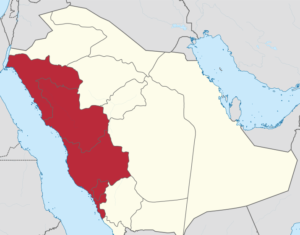Arabic Guitar Scales
Phrygian Dominant (Hijaz)
Today I share with you a simple backing track with scale diagrams that will help you start playing Arabic sound guitar easily.
Arabic scales on guitar are many. Through the posts on this blog we will discover them one by one, so make sure you bookmark or subscribe.
Time Machine
Lets quickly see some facts about this scale (you can skip to the next section if you are not much into history)
Phrygian dominant mode is the 5th degree of the Harmonic minor scale.
So if we have A Harmonic Minor scale we have E as the 5th degree. This is the root of the Phrygian dominant mode.
It’s called Hijaz in Arabic referring to the western region of the Arabian peninsula where Mecca (Holy city of Islam) is located.
It’s believed that this name was used because the daily prayer calls (Azhan) were performed using this scale in particular.
It’s not only used in Arabic music, but also in Turkey/Azerbaijan and widely in almost all Middle East countries.
There is a one note difference between Hijaz Maqam and the phrygian dominant based on classic Arabic music (Maqam music)
Hijaz-Nahawand Jins/Hijaz-Rast Jins. The latter has a quarter tone
but modern Hijaz music does not have that difference and is exactly like the Phrygian Dominant used in western/Spanish music.
Scale Maps
The visual pattern of this mode is unique since it has a minor 2nd and a major 3rd. This wide jump (interval) gives this mode it’s unique taste.
Of course this pattern can be shifted up or down the fretboard to play this mode in different keys. Like with all guitar scales, slide left or right to a new root (tonic center) and you will play the same mode. Today we will play the phrygian dominant in E
More scale maps are included in the video backing track below
Backing Track
Here is a backing track we use today to practice the E phrygian dominant mode. If you are looking for examples and some soloing ideas you can check my sample jam below the backing track then come back and try to come up with your own.
It’s a good practice to first play one octave in one pattern first on 3 strings. This will help you visualize and memorize it easier.
For example, Look at the 7th fret note E on string A; play the pattern you see in the scale map until you reach the 8th note (octave) on string G.
This pattern you played includes 7 degrees of this mode. From E to E this is an octave. Now understand that any melody you want to play using this mode will be using only these notes
you see in this pattern. More about phrasing will be explained in a future lesson but now, Try to come up with an easy phrase of 3 notes. Practice it well until it’s clear to you in pattern and technique.
Now look at other E notes of the fretboard you see in the video. Visualize new patterns and try to play the same phrase you came up with in other places on the fretboard. This will show you how everything is connected on the guitar’s fretboard. You will notice that each pattern makes it a lot easier to play a certain kind of licks (phrases or melody lines).
With practice you can build your own and with time you will have your own signature moves and motifs. Enjoy 🙂
Sample Improvised Jam
This piece is called Rhynomore. I don’t know why, just some title that came to mind. Hope you have a good time soloing along with this, just keep in mind that regardless of any theory or scale maps..etc Music comes from within. So try to listen slowly to the melodies using this scale, once you internalize that unique sound of the mode you will be able to play it and play your own solo, or compose your own music.
Next time will talk about the harmonization of this scale.
That will help you build some chord progressions you can use for your instrumental compositions or songs.
Peace.
chusss – The Visitor





